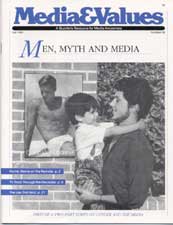YOUTH: Media Models Say Muscles Make Men
|
This article originally appeared in Issue# 48
|
Muscles are in. Young men believe that to be a "real man" you have to project a strong, tough body image. Young women agree. After all, the athletic male body rippling with muscles is spread over nearly every magazine, billboard and sports page you look at. But in Canada, young men have become painfully aware of the price of this kind of manliness because of the tragedy of Ben Johnson.
Long before the runner won the gold medal for Canada at the 1988 Summer Olympics, he had been the hero of young people in Canada. Here was the perfect male stereotype – strong, silent, muscle-bound, athletic and rich!
It was not surprising, then, that young people in Canada reacted with utter disbelief and disappointment when they found out that their idol was lying to them by taking steroids. Unfortunately, many young men were not all that shocked. They had also been taking steroids so that they could look like their well-developed idols. The Dubin Inquiry into the use of drugs in sports is currently revealing the horrifying extent of steroid use in competitive athletics. Young men say they use steroids in order to "look like real men."
But media-created images of muscle-bound men are not limited to sports reporting. Just look at other media heroes: Rambo, Hulk Hogan and Chuck Norris. All of them share the media image of muscles, muscles and more muscles. The message to young people is clear: To be popular and successful, you have to have a great body! Ads also portray an abundance of scantily clad, muscle-bound, athletic-looking young men. Is there any male cologne ad without a half-naked male body in it?
Advertising, however, can provide an entry point to working with young people to de-mythologize media's messages about physical attractiveness and body image.
Bring a collection of print ads to your class or group that portray males or females in outlandish positions. Look especially at high-fashion magazines. Have the members of the group "try out" some of the poses and hold them for a few minutes.
- While poses are held, other participants can analyze what messages are being communicated: power? authority? seductiveness?
- What does the position say to the audience about human relationships? About the product being advertised?
- How do the models feel during and after the poses?
Debrief the exercise with a discussion of body image and real human identity. With this kind of guidance, young people can learn to look beyond the images to the stereotypes and assumptions our culture makes about gender.



